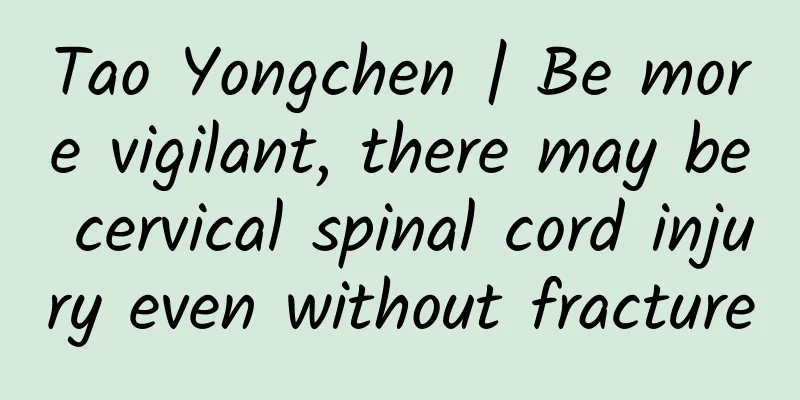What should I do if I get pregnant unexpectedly after IUD removal?

|
The contraceptive ring is currently a common method of contraception. It is a very safe and long-lasting contraceptive method. With the opening of the second-child policy, many women choose to remove the contraceptive ring. As we all know, under normal circumstances, it is best not to rush to get pregnant right after removing the contraceptive ring, because the uterus needs a certain recovery period, but what if you get pregnant unexpectedly after removing the ring? If you get pregnant one month after the IUD is removed, from the perspective of eugenics, you can keep the baby. Generally, the impact is not particularly large. If you are really worried, you can check the intellectual development of the fetus at 15-20 weeks of pregnancy, and do a four-dimensional color Doppler ultrasound examination at 22-26 weeks of pregnancy to understand whether the fetus has gross malformations and the development of major organs. How long after the IUD is removed can I have a baby? Generally, pregnancy is achieved after 2-3 periods have resumed after the IUD has been removed. Women of childbearing age should rest for 3 days after removing the IUD and are prohibited from having sex or taking sitz baths within 2 weeks to prevent infection. Some women may have a small amount of vaginal bleeding or bloody leucorrhea after the removal of the ring. Usually, it will disappear naturally after one or two days. This is a normal phenomenon. It is mainly caused by the stimulation of the endometrium and cervix by the removal of the ring. If there is a lot of bleeding or the bleeding time is long after the removal of the ring, you must see a doctor in time to avoid infection. If you plan to get pregnant, it is best to remove the IUD 3 months in advance. Regardless of how long the ring is in place, the contraceptive ring as a foreign body will more or less cause certain damage and impact on the endometrial tissue, which is not conducive to the growth and development of the embryo or fetus, and will cause defects in the newborn, and the consequences are very bad. Women who have worn contraceptive rings should wait for a period of time (2-3 normal menstrual cycles) before conceiving when planning to get pregnant, so as to give the endometrium time to recover and facilitate eugenics. It is not advisable to have a child immediately after the IUD is removed. This is mainly because the IUD placed in the uterine cavity can cause aseptic inflammatory response in the endometrium, proliferation of white blood cells and macrophages, changes in uterine fluid, which can destroy the embryonic kinase and make fertilization difficult. The contraceptive ring is a foreign body inserted into the uterus, which can interfere with the implantation of the fertilized egg, thereby achieving the purpose of contraception. In addition, copper contraceptive rings can release copper, which is not conducive to the implantation of the fertilized egg and also affects the development of the embryonic sac. IUDs containing progestin can cause atrophy of the endometrium. Regardless of how long the ring is placed, as a foreign body, the contraceptive ring will more or less cause certain damage and impact on the endometrial tissue, which is not conducive to the growth and development of the embryo or fetus and will cause defects in the newborn, with very bad consequences. |
<<: What types of female contraceptive rings are there?
>>: What kind of face is suitable for a half-ball head?
Recommend
The labia minora is as white as if it had been blistered
We all know that for women, the vagina is very im...
Leucorrhea is yellow and has a fishy smell but does not itch
Leucorrhea is a secretion of the female reproduct...
How to increase the number of follicles
The follicle is an important tissue in the female...
Can I do moxibustion when I have my period?
No matter which woman you are, you must pay atten...
What food should I eat when my aunt comes?
In modern society, "Aunt Flo" is not on...
Bleeding after taking birth control pills for half a month
Women must learn to protect themselves, especiall...
Changes in belly button after pregnancy and common sense of care
Pregnancy is a happy thing for every woman, and w...
"Blood battle" to the end: first aid and treatment of upper gastrointestinal bleeding
Author: Zhang Huijun, The Fifth Medical Center, P...
Can I dye my hair during menstruation?
Women's bodies are often weak during their me...
Common diseases of the female urethra
There are many common diseases among women. When ...
Why is the periodic table called the periodic table? The concepts of families and periods in the periodic table
The periodic table of chemical elements is a list...
Can I eat apples during confinement?
Whether we are children or adults, we all have un...
Can I take a urine test during my period?
Menstruation is a special period. During menstrua...
What causes vaginal edema?
In today's society, more and more women are t...
What are the treatments for endometrial hyperplasia?
Many women are afraid of developing some female d...









